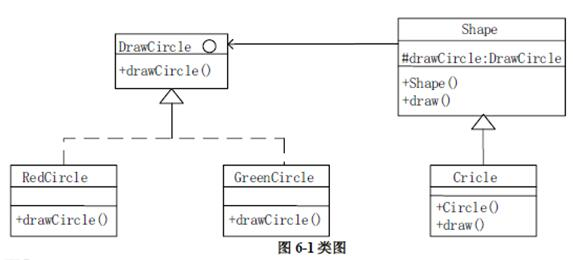若有以下程序:include using namespace std;class A{private: int x;protected: int若有以下程序: #include <iostream> using namespace std; class A { private: int x; protected: int y; public: int z; void setx(int i) { x=i; } int getx () { return x; }; class B : protected A
题目
若有以下程序: #include <iostream> using namespace std; class A { private: int x; protected: int y; public: int z; void setx(int i) { x=i; } int getx () { return x; }; class B : protected A { public: void setvalue(int a, int b, int c) { setx (a); y=b; z=c; } void display() { cout<<getx ( ) <<", "<<y<<", "<<z<<", "<<end1; } }; int main () { B obj; obj.setvalue(5, 6, 7); obj.display ( ); return 0; } 程序运行后的输出结果是( )。
A.产生语法错误
B.7,6,5
C.5,6,7
D.7,5,6
相似考题
参考答案和解析
解析:本题考核保护继承中对类成员的访问权限。①在保护继承中,基类公有成员和保护成员都以保护成员身份出现在派生类中,而基类私有成员不可访问。②基类的公有成员和保护成员被继承以后作为派生类的保护成员,这样,派生类的其他成员可以直接访问它们。③由保护派.生的类声明的对象,不能访问任何基类的成员。在本题中,基类A中的数据成员y和函数setx,经过保护继承以后,在派生类B中成为保护成员,派生类B的对象不能访问它们。而派生类B中的函数setvalue和display都是公有成员,可以通过对象对它们进行访问。所以程序中对各成员的访问是正确的。本程序的功能是对类中各数据成员进行赋值,然后查看赋值是否正确。
更多“若有以下程序:#include <iostream>using namespace std;class A{private: int x;protected: int ”相关问题
-
第1题:
请找出下列程序中错误之处 ______。 includeclassA{private: intx1;protected: int 请找出下列程序中错误之处 ______。
#include<iostream.h>
class A{
private:
int x1;
protected:
int x2;
public:
int x3;
};
class B:public A{
private:
int y1;
protected:
int y2;
public:
int y3;
void disp(){cout<<x1<<y1<<end1:} //A
void set(int i) {x2=i;} //B
};
void main() {
B bb;
bb.x3=10; //C
bb.y3=10; //D
}
A.A
B.B
C.C
D.D
正确答案:A
-
第2题:
若有以下程序:includeusing namespace std;class A{private: int a;public: A(int 若有以下程序: #include <iost ream> using namespace std; class A { private: int a; public: A(int i) { a=i; } void disp () { cout<<a<<", "; } }; class B { private:
A.10,10,10
B.10,12,14
C.8,10,12
D.8,12,10
正确答案:D
解析:本题考核派生类构造函数的使用。本题中,派生C具有多重继承关系,所以在派生类C的构造函数中应该包含基类A和B的成员初始化列表。而且派生类C中的成员函数disp分别调用了基类A、B的公有成员函数disp()用于输出基类中私有数据变量初始化后的值。所以由类C构造函数的初始化形式可知,程序最后输出为8,12,10,即D选项。 -
第3题:
阅读下列说明和C++代码,填写程序中的空(1)~(6),将解答写入答题纸的对应栏内。
【说明】
以下C++代码实现一个简单绘图工具,绘制不同形状以及不同颜色的图形。部分类及其关系如图6-1所示。

【C++代码】
#include?#include?using?namespace?std;class?DrawCircle?{??????//绘制圆形,抽象类? ? ? public: (1);//定义参数为?int?radius,?int?x,?inty? ?virtual~DrawCircle()?{?}};class?RedCircle:public?DrawCircle?{????//绘制红色圆形? ? ? ? public: void?drawCircle(intradius,?int?x,?int?y)?{cout?<?drawCircle?=?drawCircle;? }? ?virtual~shape()?{?}? public:? ?virtual?void?draw()?=?0;};class?Circle:public?Shape?{????//圆形? ? private:? ? ?int?x,y,radius;? ? public:? Circle(int?x,inty,int?radius,DrawCircle?*drawCircle)? (3)? {? this->x?=?x;? ?this->y?=?y;? ? this->radius?=?radius; }? ? ? public:? void?draw(){? drawCircle?-> (4); }};int?main(){Shape?*redCirclenew?Circle(100,100,10,????(5)????);//绘制红色圆形? Shape?*greenCircle=new?Circle(100,100,10, (6)??);//绘制绿色圆形redCircle >draw();? ?greenCircle?->draw();? ?return?0;}答案:解析:(6)(1)void drawCircle (int radius,int x,int y)
(2)DrawCircle*drawCircle
(3)drawcircle
(4)drawCircle(radius,x,y)
(5)new RedCircle()
(6)new GreenCircle()【解析】
第一空是填接口里面的方法,在接口的实现里面找,可以发现应该填void drawCircle (int radius,int x,int y)。
第二空可以根据后面this drawCircle=drawCircle判断,这里应该有一个drawCircle属性,因此应该填)DrawCircle drawCircle。
第三空这里填drawcircle,用-> drawcircle来引用父类的成员。
第四空调用drawCircle(radius,x,y)方法。
第五、六空分别创建一个红色圆形对象和一个绿色圆形对象作为Circle里面的实参。 -
第4题:
若有以下程序:includeusing namespace std;class Base{private: int x;protected: i 若有以下程序: #include <iostream> using namespace std; class Base { private: int x; protected: int y; public: int z; void setx(int i) { x=i; int getx () { return x; } }
A.1,2,3,4
B.产生语法错误
C.4,3,2,1
D.2,3,4,5
正确答案:A
解析:本题考核私有继承中类成员的访问权限。当类的继承方式为私有继承时,基类公有成员和保护成员都以私有成员属性出现在派生类中。私有派生类的成员对其基类成员的访问权和公共派生的方式相同,但是,由私有派生的类声明的对象,不能访问任何基类的成员。本题中,基类Base中的保护成员y和公有成员setx和getx,经过私有继承以后,称为派生类Inherit的私有成员,所以可以在派生类Inherit的函数成员中对它们进行访问。类Inherit中的函数成员setvalue和display都是公有成员,所以可以通过Inherit的对象对它们进行访问。本程序的功能是对类中各数据成员进行赋值,然后查看赋值是否正确。 -
第5题:
以下程序执行后的输出结果是include.using namespace std;void try(int,int,int,int) 以下程序执行后的输出结果是 #include<iostream>. using namespace std; void try(int,int,int,int); int main() { int x,y,z,r; x=1; y=2; try(x,y,z,r); cout<<r<<end1; return 0; } void try(int x,int y, int z,int r) { z = x+y; x = x*x; y = y*y; r = z+x+y; }
A.18
B.9
C.10
D.不确定
正确答案:D
解析:本题考核函数调用(参数的传递)。本题常见的错误解答是:把x=1,y=2代入到函数try中,逐步计算出r=8。最后得到r的输出值是8。以下是正确解答,根据程序逐步分析:程序中定义了一个名为try的void型函数,即函数try没有任何返回值。而try函数在main函数中是以一条独立语句的方式被调用的,且main函数最后输出变量r的值。但在main函数中,并没有对变量r赋值。在C++语言中,数据只能从实参单向传递给形参,称为按值传递。也就是说,当简单变量作为实参时,用户不能在函数中改变对应实参的值。所以虽然在函数try中,r的值为8,但它并不能传递给实参,当然最终的输出肯定是不确定的随机数了。
